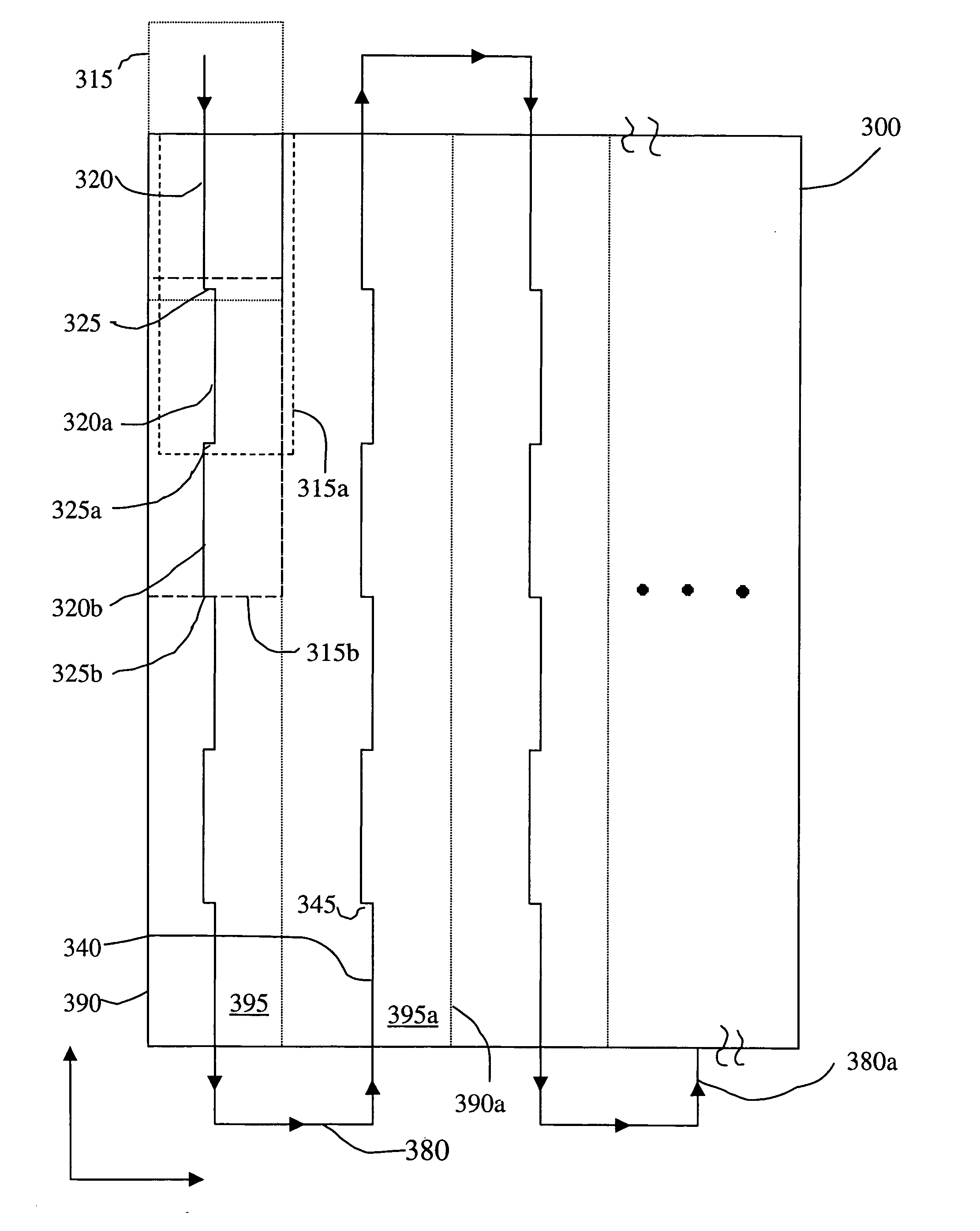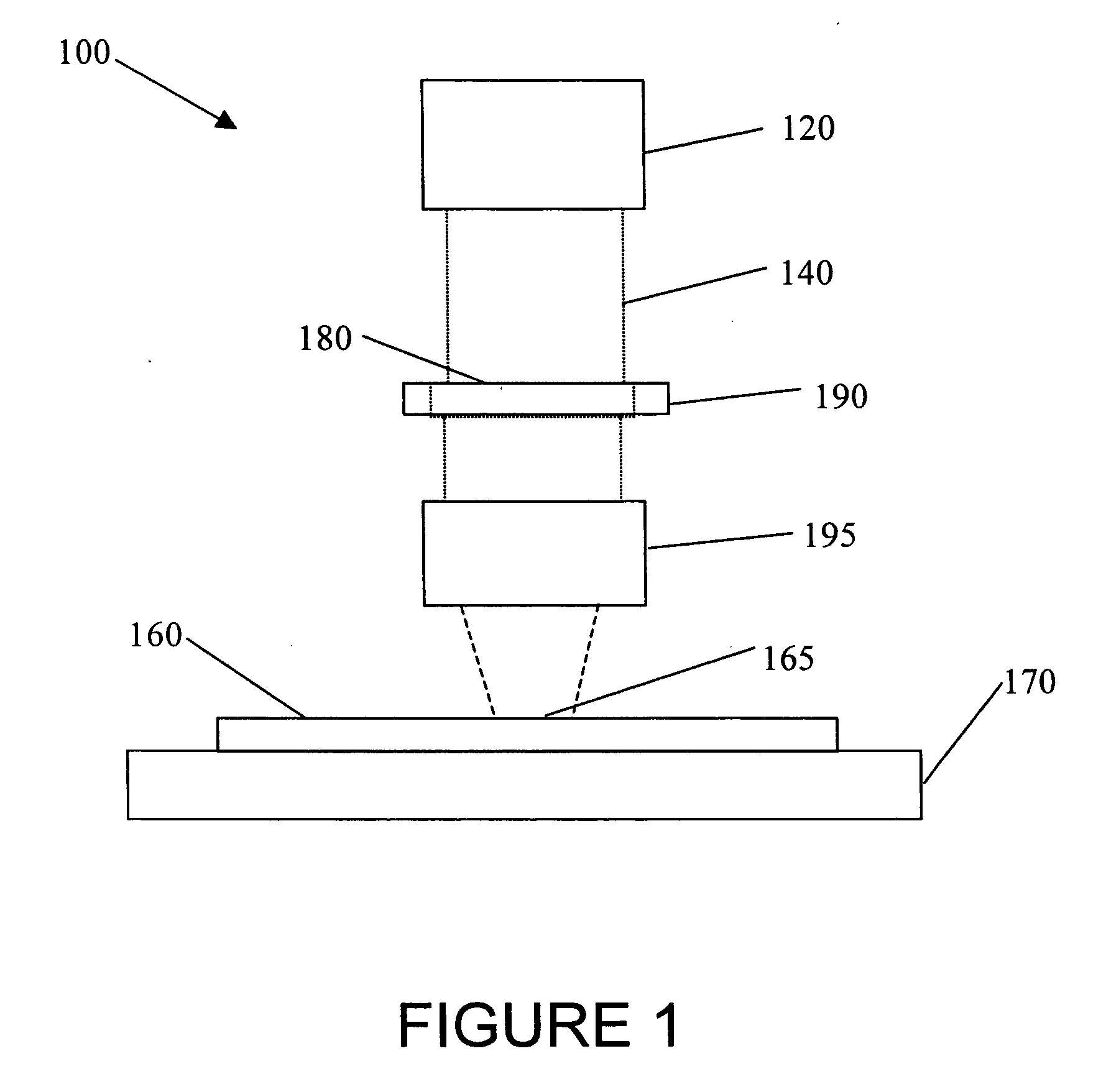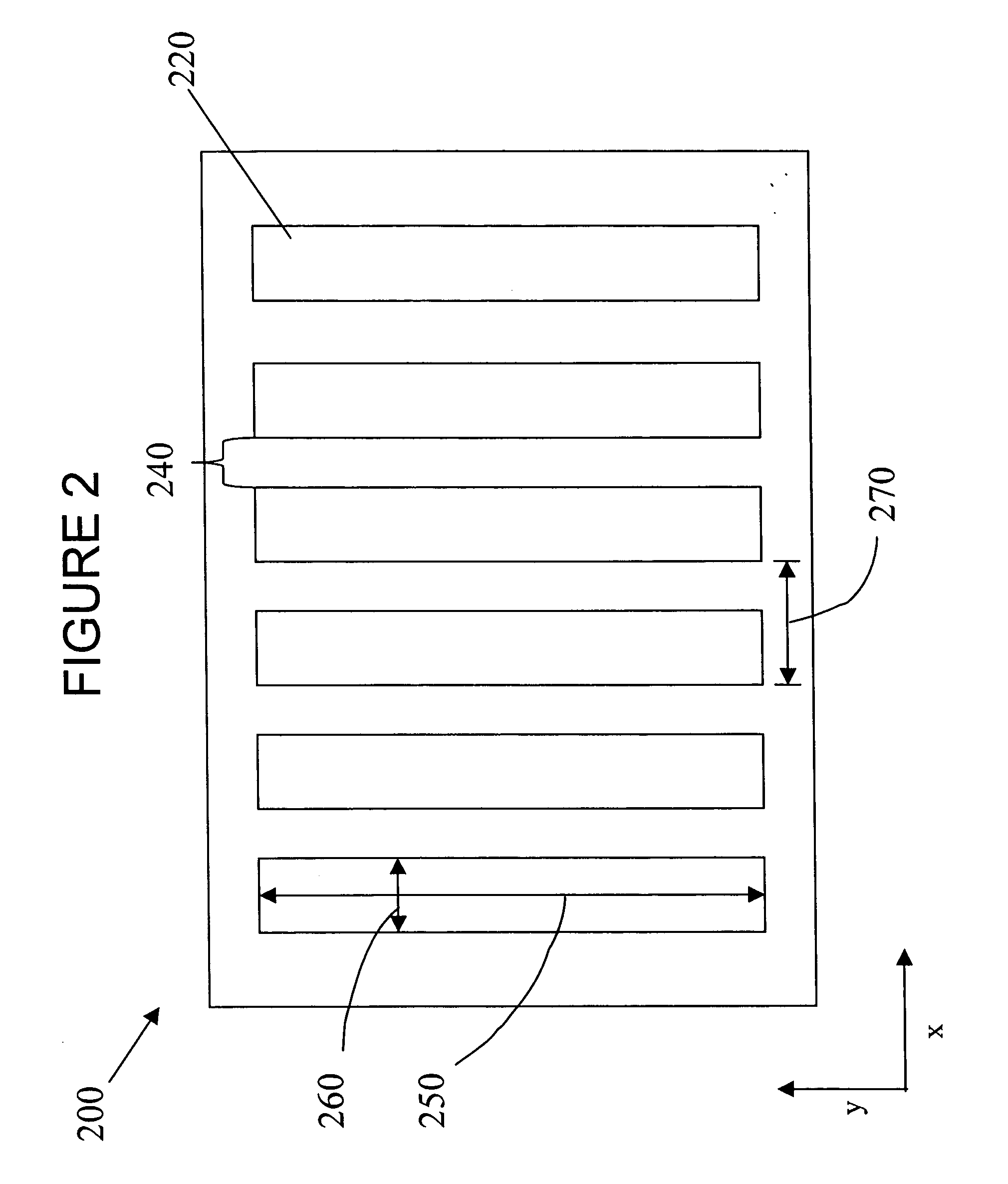Single scan irradiation for crystallization of thin films
a single-scan irradiation and crystallization technology, applied in the field of single-scan irradiation for crystallization of thin films, can solve the problems of low throughput rate, and achieve the effect of improving the crystalline properties of polycrystalline films and a simple and time-efficient process
- Summary
- Abstract
- Description
- Claims
- Application Information
AI Technical Summary
Benefits of technology
Problems solved by technology
Method used
Image
Examples
Embodiment Construction
[0036] Sequential lateral solidification is a particularly useful lateral crystallization technique because it is capable of grain boundary location-controlled crystallization and provides crystal grains of exceptionally large size. Sequential lateral solidification produces large grained structures through small-scale translation of a thin film between sequential pulses emitted by a pulsed laser. As the film absorbs the energy of each pulse, a small area of the film melts completely and recrystallizes laterally from the solidus / melt interface to form a crystalline region. By “lateral crystal growth” or “lateral crystallization,” as those terms are used herein, it is meant a growth technique in which a region of a film is melted to the film / surface interface and in which recrystallization occurs in a crystallization front moving laterally across the substrate surface. “Characteristic lateral growth length,” as that term is used herein, means the length of unimpeded lateral growth of...
PUM
| Property | Measurement | Unit |
|---|---|---|
| angle | aaaaa | aaaaa |
| δ | aaaaa | aaaaa |
| angle theta | aaaaa | aaaaa |
Abstract
Description
Claims
Application Information
 Login to View More
Login to View More - R&D
- Intellectual Property
- Life Sciences
- Materials
- Tech Scout
- Unparalleled Data Quality
- Higher Quality Content
- 60% Fewer Hallucinations
Browse by: Latest US Patents, China's latest patents, Technical Efficacy Thesaurus, Application Domain, Technology Topic, Popular Technical Reports.
© 2025 PatSnap. All rights reserved.Legal|Privacy policy|Modern Slavery Act Transparency Statement|Sitemap|About US| Contact US: help@patsnap.com



